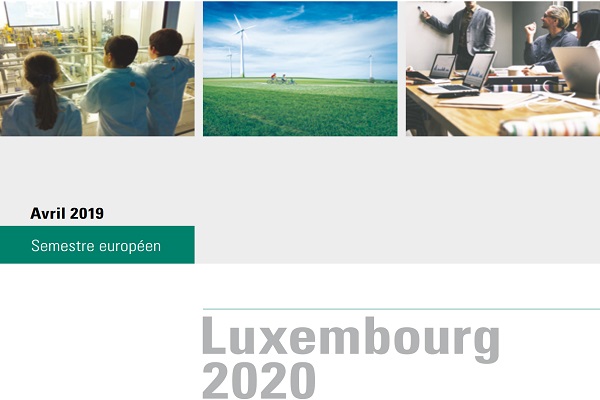 National Reform Programme 2020;
Credit: Luxembourg Government
National Reform Programme 2020;
Credit: Luxembourg Government
The Luxembourg Government submitted on Tuesday the 2019 edition of its National Reform Programme (NRP) and Stability and Growth Programme (SGP) for the period 2019-2023 to the European Commission and the EU Council.
This submission is an important step in the European Semester and follows the meetings of national social dialogue with social partners, organised under the aegis of the Economic and Social Council (ESC), as well as the debates that took place in the Luxembourg Parliament on 24 and 25 April 2019.
The NRP "Luxembourg 2020" describes Luxembourg's 10-year strategy to increase employment and research and development while strengthening social cohesion, addressing environmental challenges and aging populations. The programme foresees the implementation of the country-by-country recommendations to Luxembourg by the EU Council of Ministers for 2018-2019, as well as a number of quantitative objectives that Luxembourg has set for 2020 as outlined above.
Similarly, the 2019 SGP confirms that Luxembourg continues to fully respect the rules of the Stability and Growth Pact, while maintaining a margin in relation to the medium-term budgetary objective (MTO) to which the structural balance must conform. For the period 2020-2022, the government has also decided to raise the MTO to +0.5% of GDP under the new minimum MTO of +0.5% calculated by the European Commission. This readjustment takes place in accordance with the three-year cycle provided for by European regulations. The 2019 SGP also provides for a gradual reduction of public debt over the next five years, to reach 17.3% of GDP by 2023, making it well below the 30% limit % of GDP projected in the government programme at any one time.
Following the submission of the NRP and the SGP to the European Commission and the Council of the EU on 30 April 2019, the timetable for the European Semester is as follows: the European Commission will develop 2019-2020 recommendations for each Member State, to be published in June; the proposed recommendations will then be discussed and adopted at the level of the different formations of the Council of the EU.








